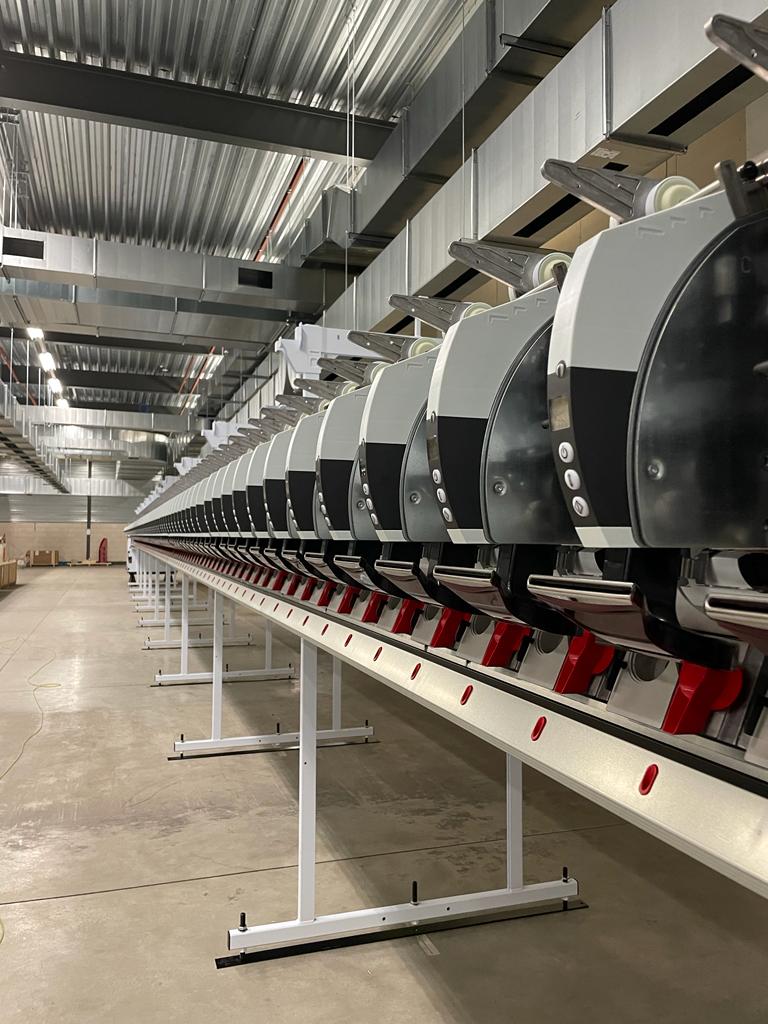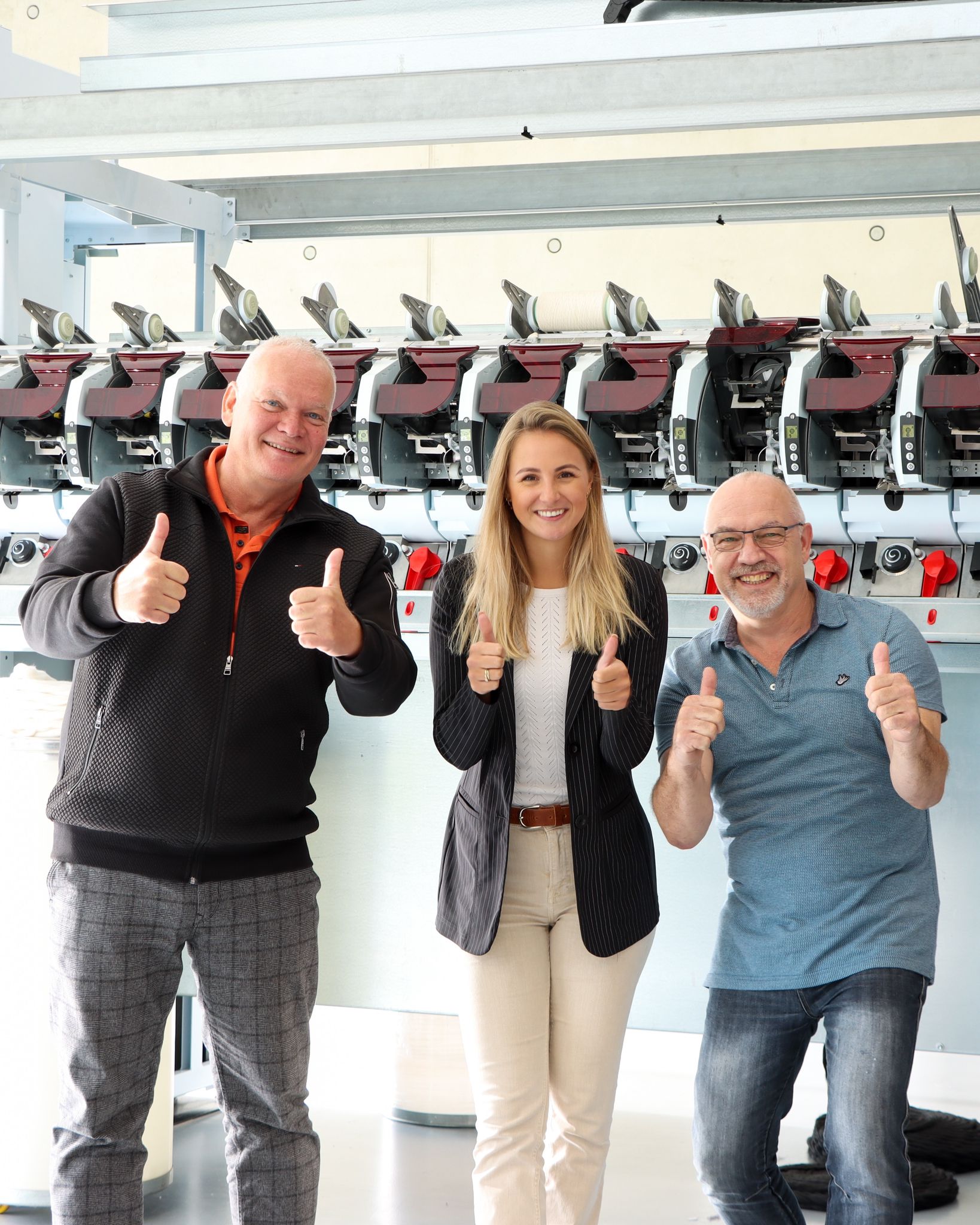SPINNING JENNY
Local production as a sustainable solution for the textile industry
Sustainability is becoming increasingly important. It also plays an important role in the textile industry. More and more consumers no longer accept textiles that have been produced under poor conditions or have a major impact on the environment. Yet, the textile industry is considered one of the most polluting industries in the world. But how polluting is it? The pollution from the textile industry is not just in the footprint of that one sweater or towel. The problems are bigger!
The problems can be found in the enormous urge to consume, the growing production that the industry has experienced in recent decades and the shift of production to the Far East. These problems do not appear to be abating for the time being. It only seems to be getting worse in recent years. The ever faster changing supply of cheap clothing by various fashion chains also contributes to this. The consumption problem is also clarified by the hard figures recently published by the Ellen McArthur Foundation, a British research center. According to an estimate by the Foundation, the number of garments sold in 2015 doubled from 15 years earlier.

This increased clothing production worldwide in 2015 to more than 100 billion garments produced in a single year. And so demand continues to rise unabated in recent years.
However, more and more consumers also no longer accept textiles produced under poor conditions or that threaten the environment. They have less consumerism and an increasing demand for more transparency from the industry. They want more control over the production chain. But the international nature of the fashion industry does not necessarily provide this transparency and prevention of environmental damage. What’s next?
Towards a circular textile industry
Due to consumerism, the demand for the fiber as a raw material for textiles continues to rise. Thus the impact of the textile industry on the environment also increases through CO2 emissions, microplastics, large consumption of water, pesticides, land and raw materials.
A more circular textile industry could reduce these problems and the pressure on the environment. Nowadays, the industry is still linear. This means that mainly new raw materials are used for the production of clothing. After use, these raw materials are discarded and lost. The discarded textile is largely incinerated or (abroad) ends up in landfills. It is becoming increasingly clear that this linear design of the textile industry has major negative impacts on the environment.
Spinning Jenny is confident that the textile industry can be transformed into a circular economy where raw materials flow back into the production chain instead of being lost. In a circular design, every step – from production residues to post-use waste – looks at whether residual materials and waste can be used for new high-quality products.
Not only Spinning Jenny, but also the Dutch government wants to have a fully circular textile sector by 2050. The intermediate goal for 2025 is that a textile product should consist of at least 25% recycled/sustainable material. Also, by then 30% of the raw materials, materials and products entering the Dutch market must be reused or recycled after collection (Ministry of I&W, 2020). But we are not that far yet. Today, less than 1% of the textile industry still consists of recycled raw materials (Ellen MacArthur Foundation).
Spinning Jenny
Spinning Jenny and its local manufacturing environment for circular and sustainable yarn production, offers opportunities that can help the textile industry move towards circularity. It provides growth opportunities for Dutch textiles and contributes to the government’s sustainability goals. Although the start-up of Spinning Jenny took some time.
About 3 years ago, Spinning Jenny wrote her first business proposal. Now, 3 years later, she has managed to bring that plan to reality. Financially this has been realized with the help of a Dutch grant called DEI+ and several investors. On the technical side, there is cooperation with local parties and European machine builders. The choice of Twente as a location is a strategic one. Twente is traditionally a textile region where a lot of knowledge can still be found.
The basic technique Spinning Jenny uses to make her yarns has long been known as OE or rotor spinning. This technique allows the spinning mill
to process shorter fibers, making it suitable for recycled textiles. By the way, Spinning Jenny is not going to recycle itself. The mill receives recycled textile fibers. It only prepares and spins them into various yarns for demanding applications in industry, home, apparel and automotive, among others. The combining of basic technology with a custom made composition of the latest machinery and techniques makes that
Spinning Jenny can deliver unique products.
The production environment with high-tech machinery measures some 6,500 square meters and will spin some 3 million kilograms of yarn annually. The machinery currently being built up can proudly be called the most modern in Europe at the moment. Some of the machines even have technology that will not be presented until mid-2023 at the ITMA – the world’s largest international trade fair for textile and clothing technology.
In addition to the high-tech machines and a skilled team, Spinning Jenny has more than 1,000 solar panels which supply a large part of its energy needs. This makes Spinning Jenny’s production process even less harmful to the environment. For every 100 kilograms of yarn production, they save about 11,000 liters of water, 2100m2 of land, 3300 kWh of energy and 1100kg of CO2. In addition, the sustainable plant is prepared to become a fully automated production environment in the future. For now, this unique company is making every effort to go into production by the second quarter of 2023.
Spinning Jenny will soon open its very first high-tech Dutch factory that will spin large quantities of yarn from recycled textiles. The name Spinning Jenny refers to one of the first types of spinning machines that played a major role in the industrialization and upscaling of textile production.
This new company “Spinning Jenny” is also trying to play a major role in changing the textile industry. The business aims to unleash a new sustainable textile revolution with their yarns. With an investment of over 7 million, this sustainable enterprise is building one of the most modern spinning mills today.

